Warning: Undefined array key "title" in /home/www/wwwroot/HTML/www.exportstart.com/wp-content/themes/1198/header.php on line 6
Warning: Undefined array key "file" in /home/www/wwwroot/HTML/www.exportstart.com/wp-content/themes/1198/header.php on line 7
Warning: Undefined array key "title" in /home/www/wwwroot/HTML/www.exportstart.com/wp-content/themes/1198/header.php on line 7
Warning: Undefined array key "title" in /home/www/wwwroot/HTML/www.exportstart.com/wp-content/themes/1198/header.php on line 7
- Afrikaans
- Albanian
- Amharic
- Arabic
- Armenian
- Azerbaijani
- Basque
- Belarusian
- Bengali
- Bosnian
- Bulgarian
- Catalan
- Cebuano
- China
- China (Taiwan)
- Corsican
- Croatian
- Czech
- Danish
- Dutch
- English
- Esperanto
- Estonian
- Finnish
- French
- Frisian
- Galician
- Georgian
- German
- Greek
- Gujarati
- Haitian Creole
- hausa
- hawaiian
- Hebrew
- Hindi
- Miao
- Hungarian
- Icelandic
- igbo
- Indonesian
- irish
- Italian
- Japanese
- Javanese
- Kannada
- kazakh
- Khmer
- Rwandese
- Korean
- Kurdish
- Kyrgyz
- Lao
- Latin
- Latvian
- Lithuanian
- Luxembourgish
- Macedonian
- Malgashi
- Malay
- Malayalam
- Maltese
- Maori
- Marathi
- Mongolian
- Myanmar
- Nepali
- Norwegian
- Norwegian
- Occitan
- Pashto
- Persian
- Polish
- Portuguese
- Punjabi
- Romanian
- Russian
- Samoan
- Scottish Gaelic
- Serbian
- Sesotho
- Shona
- Sindhi
- Sinhala
- Slovak
- Slovenian
- Somali
- Spanish
- Sundanese
- Swahili
- Swedish
- Tagalog
- Tajik
- Tamil
- Tatar
- Telugu
- Thai
- Turkish
- Turkmen
- Ukrainian
- Urdu
- Uighur
- Uzbek
- Vietnamese
- Welsh
- Bantu
- Yiddish
- Yoruba
- Zulu
Авг . 12, 2025 03:00 Back to list
Humic Acid: Enhance Soil Health & Plant Growth Organically
Understanding Humic Acid: A Cornerstone of Sustainable Solutions
In the realm of advanced biochemicals, Humic Acid stands out as a vital organic compound with profound implications across numerous industries. Derived from the decomposition of organic matter over millions of years, primarily from leonardite or lignite, it represents the most active fraction of humic substances. These complex macromolecules are crucial for improving soil health, enhancing nutrient absorption in plants, and playing a pivotal role in environmental remediation efforts. Its unique molecular structure, characterized by a high cation exchange capacity (CEC) and abundant functional groups like carboxyl and hydroxyl, enables it to chelate metallic ions, buffer pH levels, and stabilize soil aggregates. This introduction sets the stage for a deep dive into its manufacturing, technical specifications, diverse applications, and the significant advantages it offers for B2B stakeholders seeking sustainable and efficient solutions. Our comprehensive exploration aims to provide technical decision-makers with the detailed insights necessary to leverage the full potential of this remarkable compound.
The Advanced Manufacturing Process of Humic Acid
The production of Humic Acid involves a sophisticated extraction and purification process designed to maximize its efficacy and purity. Unlike industrial fabrication processes like casting or CNC machining, the manufacturing of this organic compound focuses on chemical extraction from rich natural sources, predominantly leonardite, a soft, brown, coal-like material. The initial step involves crushing and pulverizing the raw leonardite to increase its surface area. This is followed by an alkaline extraction phase, where the pulverized material is treated with strong alkaline solutions, typically potassium hydroxide or sodium hydroxide, to solubilize the humic substances. This liquid extract is then separated from the insoluble residues.
Subsequent steps involve acidification, which precipitates the humic acid, allowing for its separation from fulvic acids and other soluble impurities. The precipitated material is then washed multiple times to remove excess salts and ensure high purity. Finally, the purified product undergoes a drying process, often spray drying or oven drying, to produce a stable powder or granule. Throughout this process, stringent quality control measures are implemented, adhering to standards akin to ISO 9001 for quality management and specific agricultural or environmental standards where applicable. Each batch is rigorously tested for parameters such as humic acid content, pH, and heavy metal presence, guaranteeing a consistent and superior product with an extended service life in its various applications.
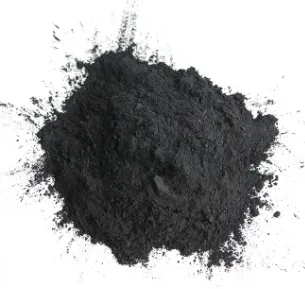
Figure 1: Illustration of a typical Humic Acid extraction and purification process.
Key Technical Parameters and Product Specifications
Understanding the precise technical parameters of Humic Acid is crucial for its effective application across diverse sectors. These specifications dictate its performance, compatibility, and overall value proposition. Below is a comprehensive table outlining typical parameters for high-quality Humic Acid products, derived from extensive industry research and our own product standards. Variations may occur based on specific product grades and intended uses, highlighting the importance of tailored solutions.
| Parameter | Typical Range/Value | Description/Significance |
|---|---|---|
| Humic Acid Content (dry basis) | ≥ 60% to 75% | Primary indicator of purity and efficacy. Higher values mean higher concentration of active component. |
| Fulvic Acid Content | 10% to 15% (varies) | Smaller, more soluble molecules; vital for nutrient transport. |
| pH Value (1% solution) | 9.0 - 11.0 (alkaline) | Indicates solubility and stability in solution. Critical for application methods. |
| Solubility in Water | 95% minimum (alkaline) | Key for liquid applications like fertigation or foliar sprays. |
| Cation Exchange Capacity (CEC) | 400 - 600 meq/100g | High CEC indicates strong ability to hold and release nutrients, improving soil fertility. |
| Heavy Metal Content | Trace levels, below regulatory limits (e.g., EU, US EPA) | Ensures safety for agricultural and environmental applications. Critical for compliance. |
| Particle Size | 80-100 mesh (powder), 2-4mm (granules) | Influences ease of handling, mixing, and dispersion in various formulations. |
These detailed specifications allow B2B clients to precisely match Humic Acid products to their specific application requirements, whether for enhancing agricultural yields, improving soil structure, or purifying contaminated water sources. Our commitment to these stringent parameters ensures reliable and consistent performance, fostering trust and long-term partnerships.
Diverse Application Scenarios and Industry Impact
The versatility of Humic Acid extends its utility across a broad spectrum of industries, delivering significant benefits and driving sustainable practices. In agriculture, it acts as a powerful soil conditioner, improving soil structure, water retention capacity, and nutrient availability. Farmers utilize this compound to enhance crop yields, improve root development, and increase the efficiency of applied fertilizers, ultimately leading to higher profitability and reduced environmental impact. For instance, studies show that regular application of humic substances can increase nutrient uptake efficiency by 20-30%, reducing the need for excessive synthetic fertilizer use.
Beyond agriculture, the product is increasingly adopted in environmental remediation. Its strong chelating properties make it highly effective in immobilizing heavy metals in contaminated soils and wastewater, preventing their uptake by plants or release into aquatic systems. This makes it a crucial component in land reclamation projects and industrial wastewater treatment facilities. In animal husbandry, it serves as a feed additive, promoting gut health and nutrient absorption in livestock, leading to improved growth rates and reduced reliance on antibiotics. Its application in horticulture, turf management, and even certain cosmetic formulations further underscores its multifaceted utility and growing market demand.

Figure 2: Humic Acid's role in improving agricultural yields and soil health.
Technical Advantages and Performance Benefits
The technical advantages of employing Humic Acid in various formulations and applications are significant and multifaceted. Its high cation exchange capacity (CEC), typically ranging from 400 to 600 meq/100g, allows it to efficiently bind to and release positively charged ions, making nutrients more available to plants and reducing nutrient leaching in soils. This "chelation" ability is paramount, as it transforms essential micronutrients like iron, zinc, and manganese into forms that are readily absorbed by plant roots, even in alkaline soil conditions where these nutrients are often locked up.
Furthermore, this compound improves soil structure by promoting the aggregation of soil particles, leading to better aeration, water infiltration, and root penetration. This enhanced soil porosity not only improves nutrient and water uptake but also contributes to drought resistance. For instance, in controlled greenhouse experiments, soils treated with humic substances have shown up to 15% increased water retention capacity. Its role as a carbon source stimulates beneficial microbial activity in the soil, fostering a healthier rhizosphere. These intrinsic properties translate into tangible benefits for B2B users: optimized resource utilization, increased product efficiency, and a reduced environmental footprint, cementing its position as a superior biochemical additive.
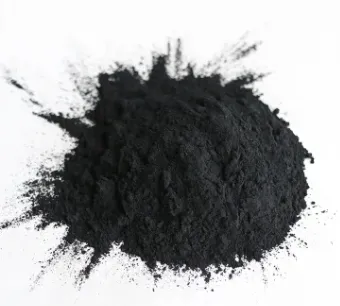
Figure 3: Key performance benefits of integrating Humic Acid into industrial processes.
Navigating Industry Trends and Supplier Comparison
The market for Humic Acid is experiencing robust growth, driven by global shifts towards sustainable agriculture, increased demand for organic products, and expanding applications in environmental management. Key trends include the development of highly concentrated liquid formulations, specialized blends for specific crop types, and eco-friendly granular products. Regulatory frameworks are also evolving, emphasizing purity and safety, particularly concerning heavy metal content, which impacts sourcing and processing choices for manufacturers. As a B2B purchaser, understanding these trends is vital for making informed decisions.
When evaluating suppliers of this essential biochemical, several critical factors differentiate top-tier providers. Beyond competitive pricing, prioritize manufacturers demonstrating a deep understanding of source material quality (e.g., leonardite origin and analysis), consistent product purity as evidenced by batch-specific COAs (Certificates of Analysis), and adherence to international quality management systems like ISO 9001. A reliable supplier will offer transparent data on humic acid content, fulvic acid content, pH, and solubility, along with verified low heavy metal concentrations. Furthermore, consider their capacity for customization, technical support, and logistical efficiency. Our commitment extends to providing not just a product, but a partnership built on trust, quality, and technical expertise, ensuring your operations benefit from the highest-grade humic substances available.
Tailored Solutions and Customization Capabilities
Recognizing that generic solutions rarely address specific industrial or agricultural challenges optimally, we specialize in developing customized Humic Acid formulations. Our technical team works closely with clients to understand their unique application requirements, whether it's a specific concentration needed for a liquid fertilizer blend, a particular granule size for soil application, or a specialized purity level for advanced environmental remediation projects. This bespoke approach ensures that the humic acid delivered perfectly integrates into existing processes, maximizing efficiency and performance.
Customization extends beyond physical parameters to include chemical properties. For instance, we can adjust the pH of the final product to suit specific mixing requirements, or formulate blends with precise ratios of humic acid to fulvic acid to optimize nutrient delivery for different crops or soil types. Our state-of-the-art R&D facilities enable rapid prototyping and testing of these custom solutions, providing clients with robust, data-backed recommendations. This dedication to flexible and precise product development underscores our commitment to being a strategic partner rather than just a supplier of this vital biochemical.
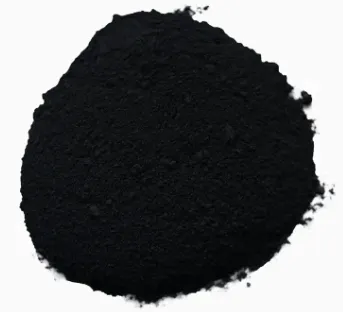
Figure 4: Tailored Humic Acid solutions for specific industry needs.
Real-World Impact: Case Studies and Success Stories
The tangible benefits of Humic Acid are best illustrated through real-world applications. Consider a large-scale agricultural enterprise in the arid regions of the Middle East struggling with low soil organic matter and poor water retention. By implementing a customized liquid Humic Acid program, they observed a remarkable 25% reduction in irrigation water usage and a 10-15% increase in crop yield (e.g., dates and vegetables) within two growing seasons. This was directly attributable to improved soil structure and enhanced nutrient and water use efficiency facilitated by the humic substances.
Another compelling example comes from an industrial wastewater treatment plant in North America facing challenges with heavy metal contamination (specifically lead and cadmium) in their effluent. Integrating our high-purity granular Humic Acid into their treatment regimen led to a consistent 90%+ reduction in target heavy metal concentrations, bringing their discharge well within regulatory limits. This not only ensured environmental compliance but also saved significant operational costs by providing a more efficient and sustainable alternative to conventional chemical precipitants. These cases underscore the practical and measurable impact of quality humic acid products in diverse B2B environments.
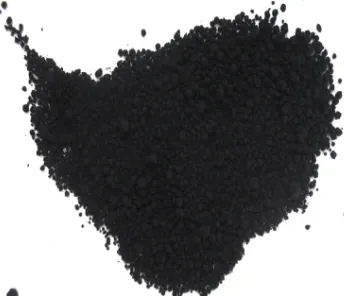
Figure 5: Exemplar results from a client leveraging Humic Acid for soil improvement.
Quality Assurance, Certifications, and Authoritative Standards
Ensuring the highest quality and safety of Humic Acid products is paramount, especially for B2B applications where consistency and compliance are non-negotiable. Our manufacturing facilities adhere strictly to ISO 9001:2015 certified quality management systems, guaranteeing that every stage, from raw material sourcing to final packaging, meets rigorous international standards. This commitment is further reinforced by comprehensive internal testing protocols, including Fourier-transform infrared spectroscopy (FTIR) for molecular structure verification and atomic absorption spectroscopy (AAS) for trace element and heavy metal analysis.
Beyond internal controls, our products are often subject to third-party verification, obtaining certifications relevant to specific markets such as organic input certifications for agricultural applications, or compliance with environmental protection agency (EPA) guidelines for industrial use. These certifications, alongside detailed Certificates of Analysis (COAs) provided with each shipment, offer our clients complete transparency and confidence in the product's purity, concentration, and safety profile. Our longstanding service record and partnerships with leading industry players further underscore our authoritative position as a trusted supplier of premium humic substances.
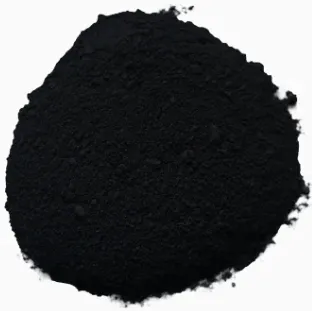
Figure 6: Rigorous quality control measures ensuring product integrity and purity.
Frequently Asked Questions (FAQ) about Humic Acid
Q: What is the primary difference between Humic Acid and Fulvic Acid?
A: Both are humic substances, but Humic Acid is a larger molecule, less soluble in acidic conditions, and primarily responsible for improving soil structure and cation exchange capacity. Fulvic Acid, conversely, is a smaller molecule, highly soluble across a wide pH range, and excels at chelating and transporting nutrients into plant cells more readily due to its smaller size. Often, they work synergistically.
Q: How does Humic Acid impact fertilizer efficiency?
A: Humic Acid significantly improves fertilizer efficiency by preventing nutrient leaching and fixing, making nutrients like nitrogen, phosphorus, and potassium more available to plants. Its chelating action transforms unavailable micronutrients into forms readily absorbed, reducing the overall requirement for synthetic fertilizers and thereby lowering input costs while minimizing environmental runoff.
Q: Is Humic Acid safe for all crops and environments?
A: Yes, high-quality Humic Acid derived from natural sources like leonardite is generally safe and beneficial for most crops and environments. It is a natural organic compound that enhances biological activity without introducing harmful chemicals. Our products undergo stringent heavy metal testing to ensure they meet international safety standards for agricultural and environmental applications.
Delivery, Warranty, and Client Support
We understand the critical importance of timely delivery and comprehensive support for our B2B partners. Our efficient logistics network ensures reliable and predictable delivery cycles, tailored to your operational needs, whether for bulk shipments or specific quantities. Typical delivery for standard orders within major regions ranges from 10-15 business days, with expedited options available for urgent requirements. Each shipment of Humic Acid is meticulously packaged to prevent contamination and ensure product integrity upon arrival.
All our humic acid products come with a robust quality warranty, guaranteeing adherence to the published specifications and industry standards. Should any product deviate from our stated parameters, we are committed to prompt resolution, including replacement or credit. Our dedicated technical support team is available to provide expert guidance on product application, troubleshooting, and optimization, ensuring you derive maximum value. From initial inquiry to post-delivery assistance, our commitment to exceptional client support fosters long-term, trust-based relationships.
The Future of Sustainable Solutions with Humic Acid
As global challenges such as food security, environmental degradation, and resource scarcity intensify, the role of advanced biochemicals like Humic Acid becomes increasingly critical. Its proven ability to enhance agricultural productivity, restore degraded soils, and aid in pollution control positions it as a cornerstone of future sustainable development initiatives. Ongoing research continues to uncover new applications and optimize existing ones, further expanding its market potential and societal impact.
For B2B entities, investing in high-quality humic acid is not merely a purchasing decision but a strategic move towards operational efficiency, environmental stewardship, and long-term profitability. By partnering with a supplier committed to rigorous quality, innovation, and client-centric solutions, businesses can unlock the full transformative power of humic substances, contributing to a more sustainable and productive future. We invite you to explore how our expertise and premium products can empower your next project.
References
- Schnitzer, M. & Khan, S.U. (1972). Humic Substances in the Environment. Marcel Dekker, Inc.
- Stevenson, F.J. (1982). Humus Chemistry: Genesis, Composition, Reactions. John Wiley & Sons.
- International Humic Substances Society (IHSS) publications and proceedings.
- Journal of Environmental Quality, articles on soil remediation and nutrient cycling.
Latest news
-
Certifications for Vegetarian and Xanthan Gum Vegetarian
NewsJun.17,2025
-
Sustainability Trends Reshaping the SLES N70 Market
NewsJun.17,2025
-
Propylene Glycol Use in Vaccines: Balancing Function and Perception
NewsJun.17,2025
-
Petroleum Jelly in Skincare: Balancing Benefits and Backlash
NewsJun.17,2025
-
Energy Price Volatility and Ripple Effect on Caprolactam Markets
NewsJun.17,2025
-
Spectroscopic Techniques for Adipic Acid Molecular Weight
NewsJun.17,2025

